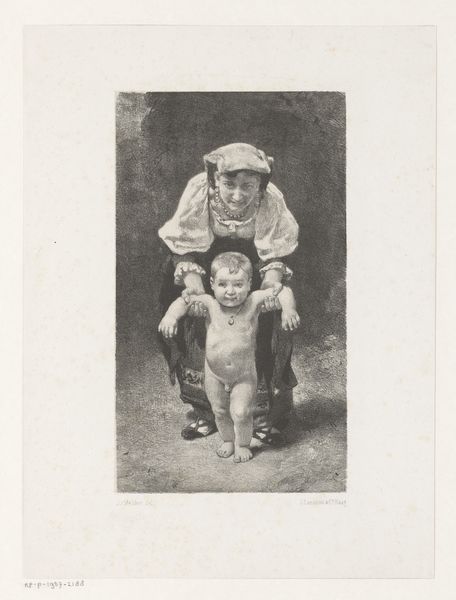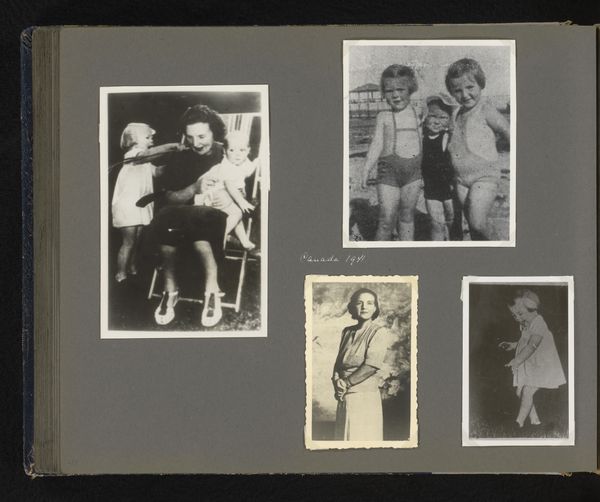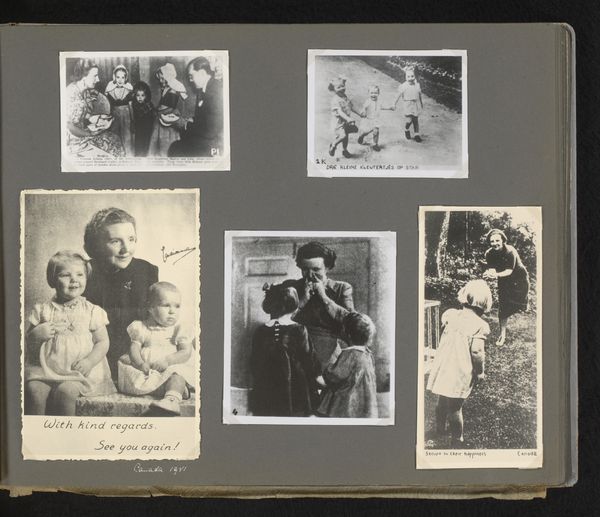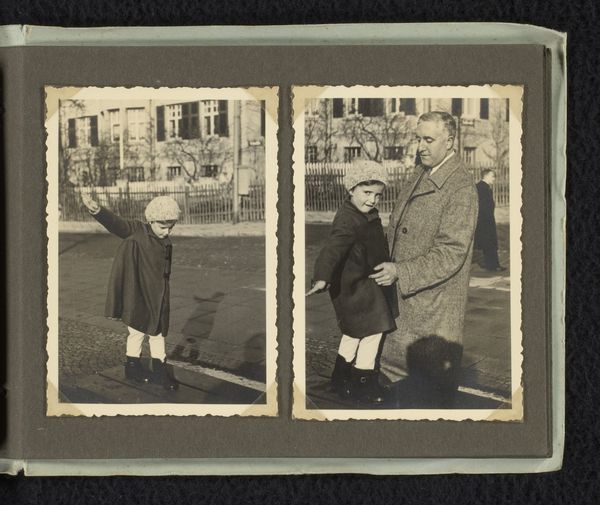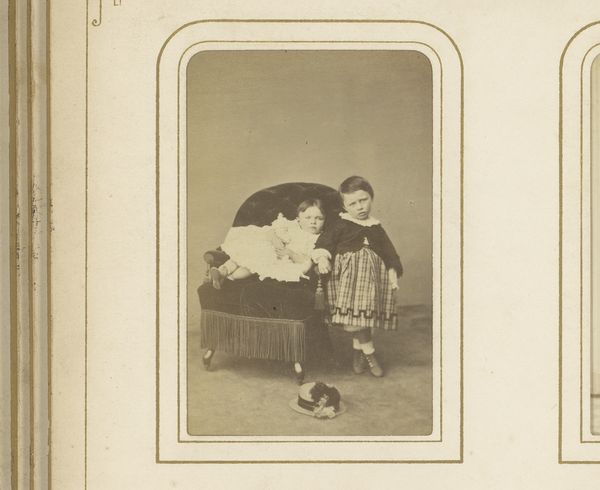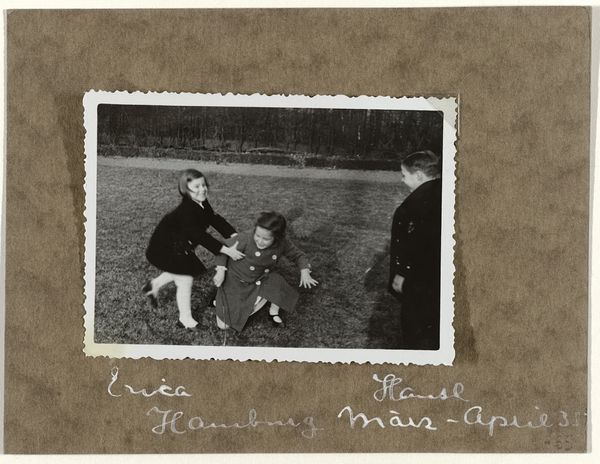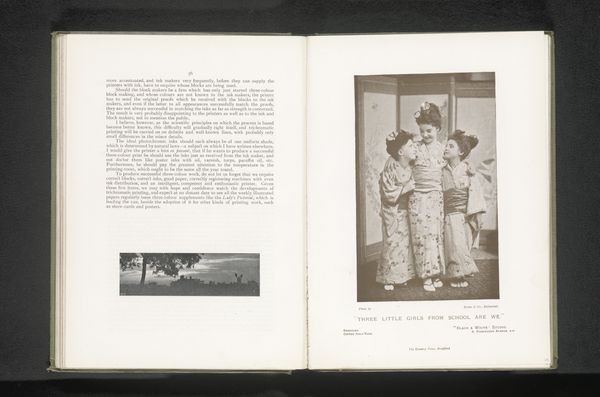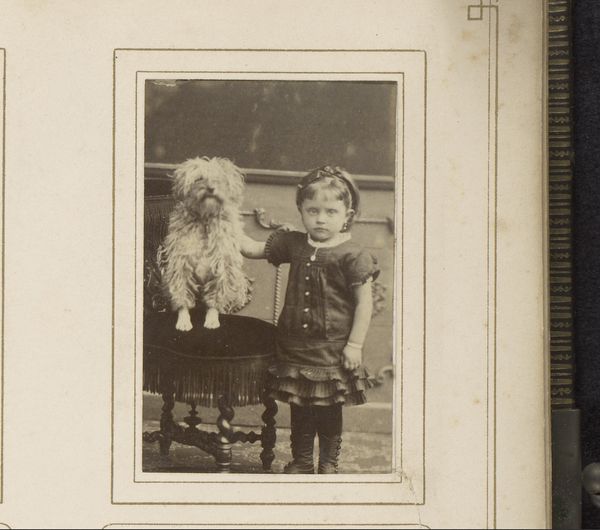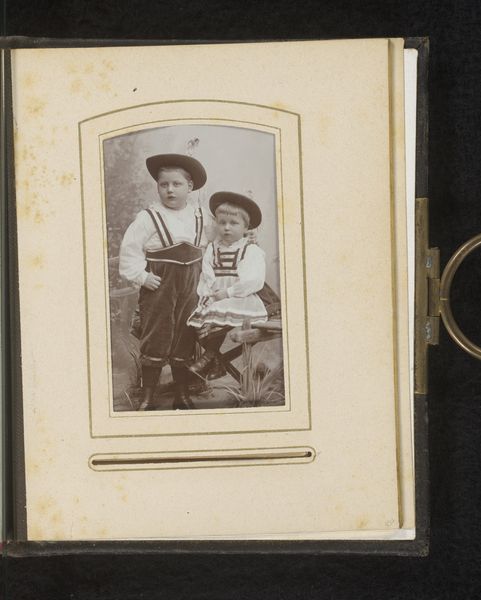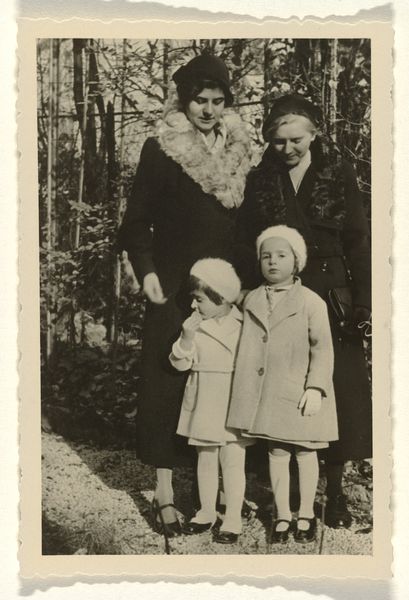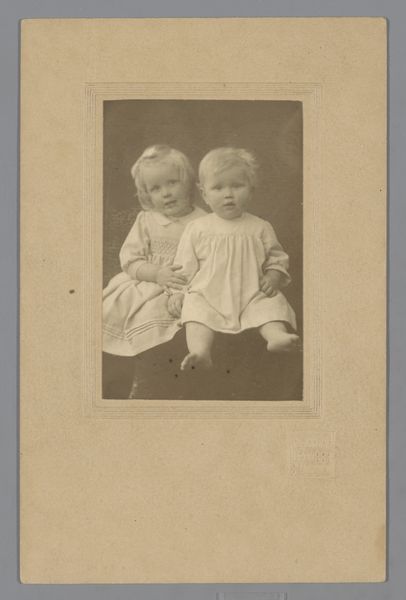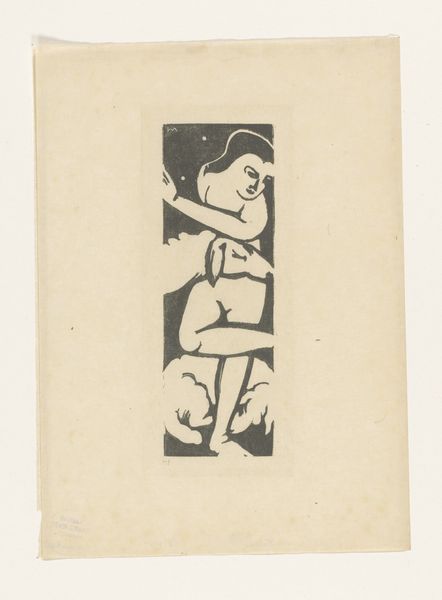
print, photography
#
portrait
# print
#
photography
#
genre-painting
#
realism
Dimensions: length 26 cm, width 35 cm
Copyright: Rijks Museum: Open Domain
Curator: Looking at this cover, there's something immediately evocative about its simplicity, almost documentary-like. Editor: Agreed. It feels intensely human. It’s joyous, in a sun-drenched, everyday way. Let’s unpack this image. We are looking at a print from approximately 1945, an image gracing what appears to be a publication cover, entitled "'Kijk', exemplaar nr. 18" or "'Look', number 18" from the Voorlichtingsdienst U.S.A. or U.S.A. Information Service. The primary medium involves photography, placing this piece in an interesting intersection between reportage and artistic expression. Curator: From a purely formalist angle, the composition directs our gaze in an upward motion, emphasizing the boy's hopeful expression, but, simultaneously the father is cropped in such a way, in order to create space only for the child. It directs your focus away from anything but his joy. Note how the grainy texture adds depth but equally emphasizes the boy and makes him appear closer. Editor: That grainy texture you’re observing tells its own story. Consider the context: 1945. Just coming out of the War. Limited resources for production; a time of recovery and rebuilding. This image isn’t just about capturing joy; it’s also about conveying hope amid scarcity, and looking forward in the postwar years. Also consider how, visually, "kijk," literally "look" in Dutch, is presented larger in crimson lettering on top and emphasizes where and on who we are directed to place our visual emphasis on in the photograph below. The textual reference and the visual both coalesce in a harmonic structure. Curator: Absolutely. Semiotically, you have the child elevated—literally and metaphorically embodying a sense of optimism about the future. A close look suggests this symbolism might come across if it weren't for the specific corduroy materiality the child's garment is comprised of, which adds complexity to the symbolism. And what seems to be writing just below, near the fold—does it denote more depth? Editor: "De zonen van Zeeland zijn vrij en lachen weer" -- "The sons of Zeeland are free and laughing again." Post-war liberation becomes palpably real. Curator: Quite compelling. A poignant blend of texture, composition, and implied narrative. Editor: Precisely. It prompts reflection on hope, resilience, and the crucial role of imagery in shaping perceptions during pivotal historical periods.
Comments
No comments
Be the first to comment and join the conversation on the ultimate creative platform.
